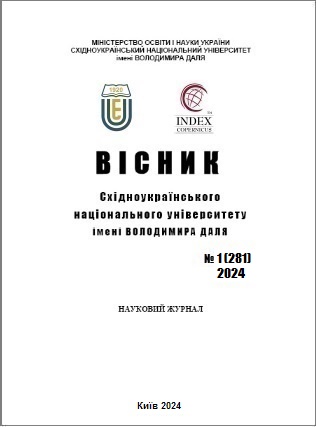Theoretical aspects of the accounting concept of intangible assets
DOI:
https://doi.org/10.33216/1998-7927-2024-281-1-5-10Keywords:
intellectual property, accounting, concept, management, intangible assetsAbstract
Intellectual property becomes the most powerfuleconomic resource that generates the receipt ofeconomic benefits, guarantees the solvency andpreservation of the economic potential of theorganization, as well as serves as an element of businessvaluation, an object of investment. In this regard,intellectual property rights can and should be adequatelyreflected in the Financial Accounting and reporting ofcompanies in order to ensure the reliability of thecharacteristics of their financial situation and economicattractiveness for investors. The necessity ofreconstruction in the composition of accountinginformation of the legal nature and economic content ofintellectual property in their indissoluble unity as factorsinfluencing the financial situation and businessdevelopment prospects is outlined, which, in contrast tothe legal aspect established in practice, provides users offinancial statements with the possibility of acomprehensive analysis of economic potential. Thecurrent concept of accounting for such a specific object,consider it exclusively through the prism of the categoryof intangible asset, thereby driving this object into the"Procrustean bed" of synthesized and legally fixedaccounting rules that cause numerous informationrestrictions. As a result, theoretically in the financialstatements formed in accordance with internationalstandards, only a part of intellectual property can bereflected, which is included in the scope of the concept ofintangible assets (and only in the ways provided for bythe standards), while any accounting tools for the rest ofthe standards are not provided for. In practice, atpresent, most of the intangible assets are not reflected inaccounting at all or are reflected at a value significantlydifferent from market valuation.
Information restrictions are comprehensive,ranging from the range of facts of economic life inrelation to intellectual property, which are reflected inaccounting and reporting, and ending with the costestimates of these facts. Thus, it is possible to state "aninformation deficit in the financial statements regardingintellectual property.
References
1. Міжнародний стандарт бухгалтерського обліку 38 «Нематеріальні активи»: Міжнародний документ від 29.03.2021.URL:https://www.mof.gov.ua/storage/les/IAS%2038_ukr%2020.pdf
2. Національне Положення (стандарт)бухгалтерського обліку 8 «Нематеріальні активи»: Наказ Міністерства фінансів України № 242 від18.10.1999. URL:http://zakon0.rada.gov.ua/laws/show/z0750-99
3. Податковий кодекс України : Кодекс України №2755-VI від 02.12.2010. URL:http://zakon3.rada.gov.ua/laws/show/2755-17
4. Сизоненко О.В. Класифікація нематеріальних активів з метою ефективного забезпечення виконання завдань бухгалтерського управлінського обліку тааналізу.URL:http://www.nbuv.gov.ua/old_jrn/Soc_Gum/Menedzhment/2010_13/suzonenk.htm
5. Банасько Т.М. Проблеми та перспективидослідження нематеріальних активів в Україні.Економіст. 2014. № 2. С. 30–33.
6. Національне Положення (стандарт) бухгалтерського обліку 7 «Основні засоби» :Наказ Міністерства фінансів України № 92 від27.04.2000. URL: http://zakon5.rada.gov.ua/laws/show/z0288
7. Подмешальська Ю. В., Бакута К. С. Облікнематеріальних активів. Ефективна економіка.2018. № 1. – URL:http://www.economy.nayka.com.ua/?op=1&z=6213
8. Blinder A.S. Financial Entropy and the Optimality of Over-Regulation Griswold Center for Economic Policy Studies. Working Paper № 242. November 2014. 32 p.
9. Camfferman K., Zeff S.A. The Challenge ofSetting Standards for a Worldwide Constituency:Research Implications from the IASB’s Early History// Accounting Review. 2018. Vol. 27(2). P. 289-312.

